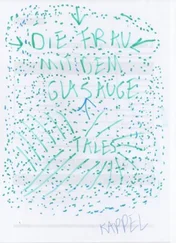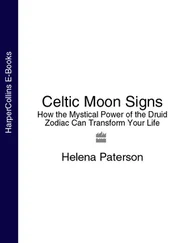Jodorowsky, Alejandro - Psychomagic - The Transformative Power of Shamanic Psychotherapy
Здесь есть возможность читать онлайн «Jodorowsky, Alejandro - Psychomagic - The Transformative Power of Shamanic Psychotherapy» весь текст электронной книги совершенно бесплатно (целиком полную версию без сокращений). В некоторых случаях можно слушать аудио, скачать через торрент в формате fb2 и присутствует краткое содержание. Год выпуска: 2010, Издательство: Inner Traditions Bear & Company, Жанр: Старинная литература, на английском языке. Описание произведения, (предисловие) а так же отзывы посетителей доступны на портале библиотеки ЛибКат.
- Название:Psychomagic: The Transformative Power of Shamanic Psychotherapy
- Автор:
- Издательство:Inner Traditions Bear & Company
- Жанр:
- Год:2010
- ISBN:нет данных
- Рейтинг книги:4 / 5. Голосов: 1
-
Избранное:Добавить в избранное
- Отзывы:
-
Ваша оценка:
- 80
- 1
- 2
- 3
- 4
- 5
Psychomagic: The Transformative Power of Shamanic Psychotherapy: краткое содержание, описание и аннотация
Предлагаем к чтению аннотацию, описание, краткое содержание или предисловие (зависит от того, что написал сам автор книги «Psychomagic: The Transformative Power of Shamanic Psychotherapy»). Если вы не нашли необходимую информацию о книге — напишите в комментариях, мы постараемся отыскать её.
Psychomagic: The Transformative Power of Shamanic Psychotherapy — читать онлайн бесплатно полную книгу (весь текст) целиком
Ниже представлен текст книги, разбитый по страницам. Система сохранения места последней прочитанной страницы, позволяет с удобством читать онлайн бесплатно книгу «Psychomagic: The Transformative Power of Shamanic Psychotherapy», без необходимости каждый раз заново искать на чём Вы остановились. Поставьте закладку, и сможете в любой момент перейти на страницу, на которой закончили чтение.
Интервал:
Закладка:
I will let you read the letter by Armelle, a young woman, half-French (by her mother), half-Vietnamese (by her father). She felt complexes among the French, and her femininity was threatened because she did not accept her Asian roots. Very affected by the war, her father renounced Vietnam. I advised her to go to his homeland to find her roots. Beforehand, she should, at Christmas, eat a mango, saving the stone and germinate it in a glass of water, then plant it in an earthenware pot for thirty-three days.
Then it was necessary to take it to Vietnam to plant it in her paternal family’s garden. Here, then, is what she wrote to me once the act was accomplished:
I left for Vietnam on August 5, 1986. When the airplane began to fly over Vietnam, we encountered turbulence, although from the beginning the trip had been very calm. Then, I began to be sick, and I spent this time of flying over Vietnam in the restroom vomiting. It seemed that a part of me refused this country (maybe because of the disgust my father held toward his own race). Arriving there, I felt I saw my father in all the little men with whom I crossed paths (my father left Vietnam at fourteen years old). And then, a strange thing, I was anguished about having my period, and I had experienced the same feeling at the time of my first menstruation. So I think I then recovered contact with my femininity. I could also observe the femininity of the Vietnamese women, so natural, delicate, and gracious. I was shocked that no one took me for a Vietnamese, and it was then that, for the first time, my French roots appeared clearly to me. I arrived August 13 at my father’s city of birth. I was very moved, and I cried almost all night, prey to an immense solitude and a full rage I felt toward my father. The next day, I went to see the house of my great-great-grandmother, and the whole family found itself reunited to celebrate the ancestors. We burned incense before the altars of all the ancestors. I had a strong feeling in front of the tomb of my great-grandmother, though I never met her. Then, I planted my mango tree in the garden, with the whole family’s assistance. This moment was extraordinary: to dig a hole in Vietnam’s yellow earth to plant this tree whose roots were surrounded by black earth from France. The contrast of the two lands was, for me, a fantastic symbol. In addition, strange coincidence, the garden was full of mango trees. The trip was very important for me. It allowed me to acknowledge my femininity, to analyze and give value to the heritage of this culture, to recognize that I had based my racial complex on an illusion. Merci.
Why did Armelle have to wait for Christmas to eat the mango then bury the stone precisely thirty-three days later?
This girl not only experienced a complex face-to-face encounter with her double origin, she also found herself between two religions. I therefore had to persuade her unconscious to accept itself as a gift of the two cultures and to combine them within her. Christ was born on Christmas and died at thirty-three years of age, only to rise from the dead. It is this entire cycle that Armelle transported to Vietnam in the form of a plant.
Have you had the occasion to “heal” other racial complexes?
Yes, of course. One day I went to visit a man with an African father and a French mother and, almost immediately afterward, I saw a woman in the same situation. They did not know one another, and they came to consult me separately. They both experienced a deep sadness toward their mixed race. I decided to unite them in a psychomagic act, one that they would complete together. I told myself that through this act, simultaneously completed by two people of the opposite sex, they were going to embody the inner man and woman, the animus and anima. Their skin was neither very light nor very dark. I asked them to paint themselves one in black, one in white, and go by car to the Arc de Triomphe, then, from there, to walk down the Champs-élysées. You are two tubes of paint. One bears the inscription “flesh” the other “Negro.”
The bathroom is tight, and the girl at my right finds herself ill at ease. She has no energy, no flexibility. She seems about to cry. She chose to paint herself first as a white female. I paint myself then in black. Periodically, I feel my stomach in knots, then I tell myself, “Let’s go. This is nothing. It’s going to be fun.” In fact, there is nothing amusing about this. I remember what pushed me to accept this walk down the Champs-élysées wearing a wig and a Rasta tam. My companion is white and dressed in black. We walk. At first, fast, as if we wanted to run, but soon we slow down. I attract all the attention; no one seems to notice the woman at my side. A lot of people look at me, smiling, and I feel really small, as if I shriveled inside myself. I hear people commenting, “Hey, Rasta man!” I smile. I do not feel my body; I do not feel the ground we’re walking on. It feels like I’m dreaming, and I’m ill at ease. I want to rip off my wig and clean my skin and scream, “This is not me!” We enter a shadowy corridor, and I calm myself a bit. When we go out, I am better. The rest of the distance seems easier, and I notice one thing: whatever the image that the people have of me, this is no more than an image. No one can see me just as I am if I do not decide to really show myself. If even then—who is really capable of seeing me? We arrive at the end of our first trip. In the car, back home, I dream of this notion of image, and I tell myself it would be interesting to play a bit with mine. Back home in the bathroom, I scrub my face and the black color goes away; it drips into the sink. I remember that, all my childhood, I had wanted to see the color of my skin drip into the sink. This time, I played the role of the white man. I find the paint more difficult. I am not as good at imitating the aspect of the white flesh. I have the air of a drag queen. The image that I give myself this time is that of a heavy metal fan with a boom box. Painting myself as a white man gives me the impression of committing a sacrilege. It is interesting because this feeling did not exist earlier. We walk down the Champs-élysées again, but this time, no one seems to notice me. A lot of people, however, observe the girl at my side. She is very black and dressed in white. Throughout the distance, I ask myself if the people would feel as uncomfortable as I do at the moment if they knew what I was doing . . . Though, all of this is, in the end, very impersonal. No one saw anything. People are indifferent; each is doing his own thing . A little tour of the Virgin Megastore, and the trip is finished. I feel very light. I have this crazy desire to spend money on new clothes. It is as if a dream has ended.
Very interesting. But the letter does not mention the subsequent effects of the act.
Sylvain and Nathalie had very positive reactions. They both, some time later, found partners, Sylvain with a woman of no color, Nathalie with a man of color. As much as I know, these two couples are doing well.
Up until now, we have mentioned truly painful complexes but, if I can say, purely psychological: a man unable to earn a living, a writer unable to write, people unable to live with their mixed race . . . Could Psychomagic aid a person who has undergone a very precise exterior trauma? For example, a traumatic experience unfortunately very common, in my opinion, an abortion?
I will show you a letter relating to this problem. Brigitte felt guilty about an abortion undergone in the absence of her companion, Michel. She was depressed and not resigned to this idea. Her relationship with her friend was in a crisis; they drew it out more and more. I proposed an act so that they could mourn the fetus together and definitively bury it. Brigitte and Michel must collaborate building a box out of fine wood, lined with a fabric of the best quality, the box of course symbolizing a coffin. In addition, they should choose, in mutual agreement, a fruit to symbolize the fetus—they chose a mango. Brigitte, naked, should place the fruit on her stomach and keep it there with a thick bandage. Michel should cut the bandage with a pair of scissors, as if he were a surgeon, and extract the mango. Brigitte should relive all the feelings she had during the operation and express them loudly. After placing the “fetus” in the box, they should go bury it in a very beautiful place. That done, Brigitte should kiss Michel and with her tongue put two stone marbles, one red and one black, into his mouth. This is how I prescribed the act. Here is the letter from Brigitte:
Читать дальшеИнтервал:
Закладка:
Похожие книги на «Psychomagic: The Transformative Power of Shamanic Psychotherapy»
Представляем Вашему вниманию похожие книги на «Psychomagic: The Transformative Power of Shamanic Psychotherapy» списком для выбора. Мы отобрали схожую по названию и смыслу литературу в надежде предоставить читателям больше вариантов отыскать новые, интересные, ещё непрочитанные произведения.
Обсуждение, отзывы о книге «Psychomagic: The Transformative Power of Shamanic Psychotherapy» и просто собственные мнения читателей. Оставьте ваши комментарии, напишите, что Вы думаете о произведении, его смысле или главных героях. Укажите что конкретно понравилось, а что нет, и почему Вы так считаете.












